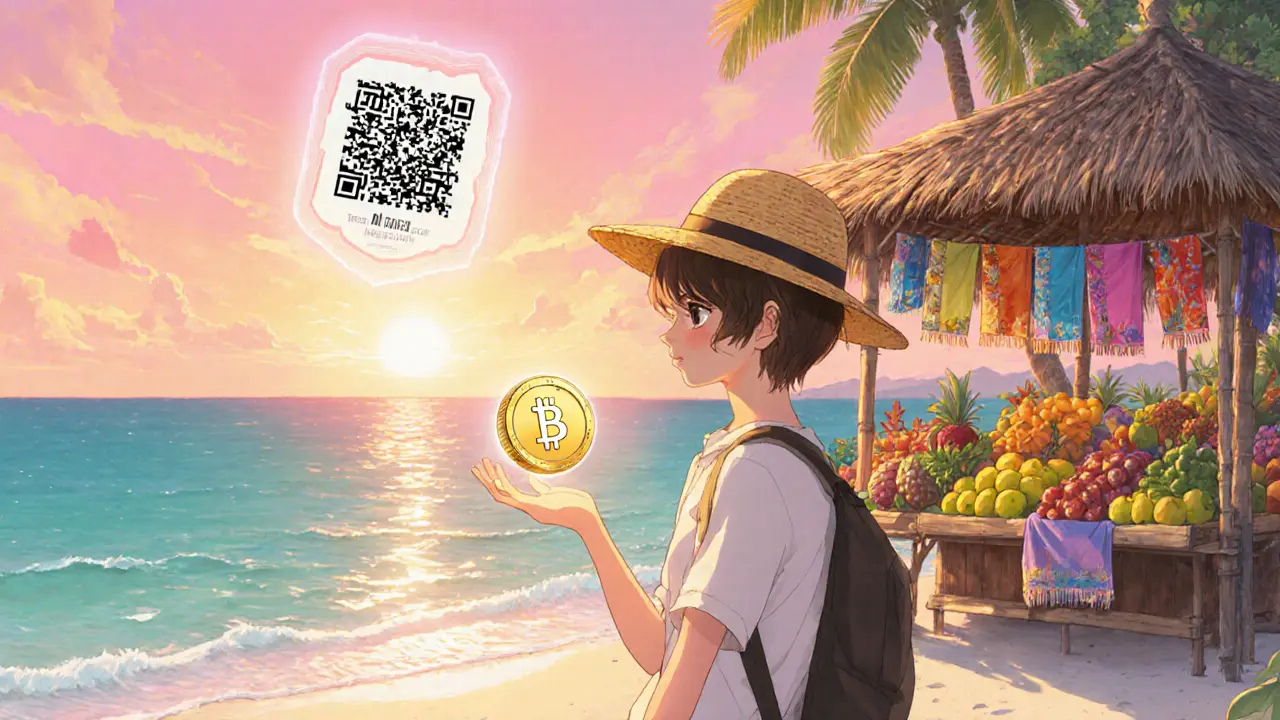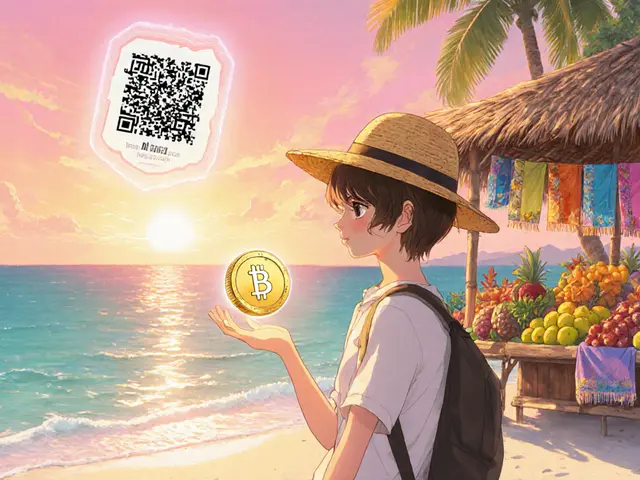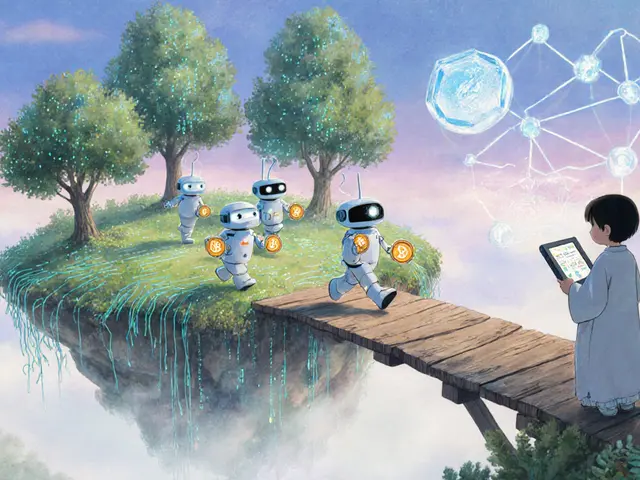BALI TOKEN (BLI) Calculator
Current Market Data
Investment Simulator
Investment Results
Risk Assessment
BALI TOKEN (BLI) is a micro-cap cryptocurrency with significant risks due to:
- Low liquidity causing price slippage
- No listing on major exchanges
- Uncertain adoption by local businesses
- Regulatory uncertainty in Indonesia
When talking about Bali’s crypto scene, BALI TOKEN (BLI) is an Ethereum‑based utility token created to power the Bali tourism ecosystem and help Indonesia’s post‑COVID economic recovery. It launched in 2021 and is managed by the Bali World Crypto Center project.
Quick Summary
- BALI TOKEN (BLI) is a micro‑cap utility token built on Ethereum and Binance Smart Chain.
- It aims to enable payments for hotels, restaurants, transport and local products across Bali.
- Supply: 900trillion tokens; circulating supply not publicly disclosed.
- Current price hovers around $0.000091-$0.000092, with daily volume under $100.
- Buy on decentralized exchanges; major centralized exchanges have not listed it.
What Is BALI TOKEN (BLI)?
Designed after the tourism collapse caused by COVID‑19, BLI’s mission is simple: give travelers and local merchants a digital currency that works everywhere on the island. The token is issued by Bali Token Global, the holding company that runs the Bali World Crypto Center (BWCC). BWCC owns the branding, the roadmap and the partnerships with hotels, restaurants and transport operators.
Because BLI is a utility token, it doesn’t promise dividends or voting rights. Its value comes from actual usage within the Bali tourism ecosystem - paying for a beachside cab, booking a villa, or buying a handcrafted sarong.
Technical Foundations
The token lives on two blockchains:
- Ethereum (ERC‑20 standard). The contract address is
0x42BE29132756ddd6e8B3B94584cA0bAb20545EEc. - Binance Smart Chain (BEP‑20). The BSC version lets users enjoy lower gas fees when transacting.
Ethereum is a public, permission‑less blockchain that enables smart contracts and token standards like ERC‑20. It offers robust security but can become pricey during network congestion. Binance Smart Chain is a parallel chain designed for fast, cheap transactions, compatible with the Ethereum Virtual Machine, making it an attractive fallback for everyday payments.
The dual‑chain approach lets merchants choose the network that best suits their customers’ wallets and cost expectations. In practice, most Bali businesses accept BLI on Ethereum, while the BSC version is popular among travelers who already hold Binance‑linked wallets.
Use Cases in the Bali Tourism Ecosystem
Below are the core scenarios where BLI is meant to replace cash or traditional cards:
- Accommodation bookings: Hotels and villas list prices in BLI, allowing instant settlement without foreign‑exchange fees.
- Food & beverage: Restaurants, street stalls and coffee shops scan a QR code linked to a BLI address.
- Transportation: Taxis, motorbike rentals and shuttle services accept BLI via mobile wallets.
- Local products: An e‑commerce marketplace (in development) will showcase Balinese crafts, all purchasable with BLI.
- Exclusive experiences: Token holders get access to premium tours, early‑bird discounts and special events.
The roadmap also promises a proprietary DEX to swap BLI for other assets without leaving the Bali network, plus staking options that reward long‑term holders with additional tokens.

Market Snapshot & Tokenomics
| Metric | Value |
|---|---|
| Launch Year | 2021 |
| Total Supply | 900trillion (9×10¹⁴) tokens |
| Circulating Supply | Not publicly disclosed |
| Current Price (USD) | $0.000091-$0.000092 |
| All‑Time High | $0.000020 (LiveCoinWatch) / $0.000014 (CoinPaprika) |
| 24‑h Volume | ≈ $80-$90 |
| Market Rank | #8,178-#10,688 (varies by tracker) |
The token sits in the micro‑cap tier, meaning market cap is measured in single‑digit millions. Low liquidity translates to noticeable price slippage when you try to buy or sell a large amount. That’s why most community members trade only small quantities.
How to Acquire BLI (Buying Guide)
Since major exchanges like Binance haven’t listed BLI, you’ll need a DeFi‑friendly wallet (MetaMask, Trust Wallet, or Binance Chain Wallet). Follow these steps:
- Set up a wallet: Install the extension or app, write down the seed phrase, and protect it.
- Add the token: In MetaMask, click “Add Token”, choose “Custom Token”, and paste the contract address
0x42BE29132756ddd6e8B3B94584cA0bAb20545EEc. The token symbol will auto‑fill as BLI. - Fund your wallet: Transfer ETH (for Ethereum) or BNB (for BSC) to cover gas fees.
- Choose a DEX: Uniswap (Ethereum) or PancakeSwap (BSC) host the BLI pair. Search for “BLI/ETH” or “BLI/BNB”.
- Swap for BLI: Enter the amount of ETH/BNB you want to trade, review the slippage tolerance (set it higher, e.g., 2‑3%, because of low liquidity), and confirm the transaction.
- Verify receipt: After the transaction confirms, you’ll see BLI balance in your wallet.
Be prepared for higher gas fees on Ethereum during peak times; the BSC route often costs less than $0.01 per transaction. If you’re new to DeFi, start with a tiny amount (e.g., $5 worth of BLI) to get used to the steps.
Risks & Criticisms
Every crypto investment carries risk, but BLI presents a few unique challenges:
- Liquidity scarcity: Daily volume under $100 means large trades can move the price dramatically.
- Exchange accessibility: Absence from major centralized exchanges limits exposure to casual investors.
- Adoption gap: Real‑world merchant acceptance is still anecdotal; many listed businesses are still in pilot mode.
- Regulatory environment: Indonesian crypto regulations are evolving; future rules could affect token operations.
- Data transparency: Circulating supply and on‑chain activity data are hard to audit, raising questions about token management.
These points don’t automatically rule out BLI, but they should color any decision to hold or trade the token.
Roadmap & Future Outlook
The official roadmap lists three major milestones:
- DEX Integration (2024‑2025): A Bali‑branded decentralized exchange that connects Ethereum, BSC and other chains, allowing seamless swaps.
- Staking Program (mid‑2025): Users will lock BLI for a set period and earn a percentage of transaction fees collected from merchant payments.
- Proprietary Blockchain (2026+): A custom chain designed to act as a bridge for multiple assets and to host the e‑commerce marketplace for Balinese products.
Progress updates are sparse on public channels, and no concrete dates have been confirmed by the team. The success of these initiatives hinges on three factors: continued tourism recovery, partnership rollout with local businesses, and the ability to attract liquidity providers.
If the DEX launches and staking gains traction, BLI could see a modest bump in volume and price stability. Conversely, if merchant adoption stalls, the token may remain a niche, low‑liquidity asset.
Frequently Asked Questions
Is BALI TOKEN (BLI) listed on any major exchanges?
No. BLI is currently only available on decentralized exchanges such as Uniswap (Ethereum) and PancakeSwap (BSC). Major centralized platforms like Binance have not listed the token.
What can I actually spend BLI on in Bali?
Participating hotels, restaurants, taxis and a few souvenir shops accept BLI for direct payment. The ecosystem is still growing, so coverage is not universal yet.
How does staking work for BLI?
The upcoming staking module will let holders lock their BLI for a predetermined period (e.g., 30‑90 days). In return, they earn a share of transaction fees generated by merchant payments on the Bali network.
Is BLI a good investment?
Investing in BLI is high‑risk. Its micro‑cap status, low liquidity and limited real‑world use mean price swings can be extreme. Treat it as a speculative token rather than a stable store of value.
Where can I find the official BLI contract address?
The verified Ethereum contract address is 0x42BE29132756ddd6e8B3B94584cA0bAb20545EEc. The same address is used on the Binance Smart Chain.







Write a comment
Your email address will be restricted to us